How to Avoid Lower Back Pain While Cycling
Cycling is a great cardiovascular activity that's generally easy on the joints because it's not weight bearing, although back pain seems to be relatively common among cyclists. According to research, about 68% of people who cycle...
Part 1 of 3:
Choosing the Right Bike
-
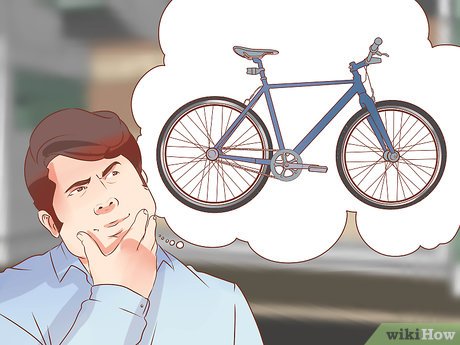 Buy the appropriate size of bike. It should be obvious that an improperly-sized bike can lead to back pain or other physical issues, but many people select a new bike based on price point and tend to downplay the importance of the bike's dimensions and ergonomics. Ideally, a bike should be customized to your body, but that can get pretty expensive. A more economically friendly alternative is buying a bike from an actual cycle store (not a big department store) and asking the salesperson about proper sizing.
Buy the appropriate size of bike. It should be obvious that an improperly-sized bike can lead to back pain or other physical issues, but many people select a new bike based on price point and tend to downplay the importance of the bike's dimensions and ergonomics. Ideally, a bike should be customized to your body, but that can get pretty expensive. A more economically friendly alternative is buying a bike from an actual cycle store (not a big department store) and asking the salesperson about proper sizing.- Once you've narrowed down the style of bike and the size of the frame, ask to take the bike on an extended test drive (at least 30 minutes) and see how your back responds to it.[2]
- Choosing a bike that is too big will cause you to hunch over too far when reaching for the handlebars, which can eventually lead to back pain.
- For those with low back conditions, a reclining bike (also called a recumbent bike) may be the best bet.[3]
-
 Make sure the saddle is the right height. Although the bike's frame height is important, especially for being able to dismount safely, the height of your saddle is even more paramount. Saddle height is determined by how long your legs are and should be positioned so that when the pedal is at the bottom of the stroke (nearest the ground), your knee should have a slight bend in it — between 15 – 20 degrees of flex ideally.[4]
Make sure the saddle is the right height. Although the bike's frame height is important, especially for being able to dismount safely, the height of your saddle is even more paramount. Saddle height is determined by how long your legs are and should be positioned so that when the pedal is at the bottom of the stroke (nearest the ground), your knee should have a slight bend in it — between 15 – 20 degrees of flex ideally.[4]- Your hips and buttocks shouldn't move sideways while peddling and you shouldn't have to stretch your legs at the bottom of each pedal stroke — stretching too far with your legs puts strain on your low back.
- Adjusting the saddle angle is also important. Positioning it horizontal (parallel to the ground) suits most people, although people with chronic back conditions or sensitive perineum areas may feel more comfortable with the saddle tilting somewhat forward.
-
 Adjust the handlebar height and angle. The bike's handlebars should be adjusted to a height at which you can comfortably reach them from an upright position, while having your elbows slightly bent. This is usually a personal preference, but the handlebar height is often even with or up to 4 inches (10 cm) below the saddle height, depending on back muscle flexibility.[5] The angle of the handlebars is not adjustable on many low-to-mid-range bikes, but if yours is, try different settings and see how your back responds. Increasing the angle acts to raise the handlebars and bring them closer to your body (allowing you a more upright posture), which may be helpful for preventing back strain.
Adjust the handlebar height and angle. The bike's handlebars should be adjusted to a height at which you can comfortably reach them from an upright position, while having your elbows slightly bent. This is usually a personal preference, but the handlebar height is often even with or up to 4 inches (10 cm) below the saddle height, depending on back muscle flexibility.[5] The angle of the handlebars is not adjustable on many low-to-mid-range bikes, but if yours is, try different settings and see how your back responds. Increasing the angle acts to raise the handlebars and bring them closer to your body (allowing you a more upright posture), which may be helpful for preventing back strain.- Novice and occasional cyclists should keep their handlebars at the same height as their saddle.
- Seasoned cyclists generally keep their handlebars a few inches below their saddle height to be more aerodynamic and faster, but it requires decent flexibility within the muscles of their backs.
-
 Get a bike with suspension. Almost all modern bikes (at least mountain bikes) have some sort of suspension or shock-absorbing accessories. Shock absorption is very important for the well-being of your spine, especially if you mountain bike on rough terrain and are getting frequently jarred.[6] The smoother your ride is, the less musculoskeletal pain you're likely to develop. Get a bike with front shocks at the very least, but consider bikes with full suspension somewhere underneath the seat if preventing back pain is important to you.
Get a bike with suspension. Almost all modern bikes (at least mountain bikes) have some sort of suspension or shock-absorbing accessories. Shock absorption is very important for the well-being of your spine, especially if you mountain bike on rough terrain and are getting frequently jarred.[6] The smoother your ride is, the less musculoskeletal pain you're likely to develop. Get a bike with front shocks at the very least, but consider bikes with full suspension somewhere underneath the seat if preventing back pain is important to you.- Other forms of shock absorption on a bike include: thick knobby tires, heavily padded saddles and cushioned biking shorts.
- Most suspension accessories are adjustable, so ask a qualified salesperson for assistance if you need to.
- Road racing bikes tend to be especially light and rigid, but don't come with suspension.
Part 2 of 3:
Maintaining Proper Form
-
 Avoid slouching or hunching your shoulders while riding. Your posture while cycling is also crucial if you want to avoid back pain. Try to keep your back straight while cycling — not completely erect like sitting in a chair — but rather flat, stable and well supported by squared shoulders. Distribute some of your weight to your arms and hands while keeping your chest and head up.[7] Shift positions and change the angle of your upper body periodically in order to prevent muscle fatigue.
Avoid slouching or hunching your shoulders while riding. Your posture while cycling is also crucial if you want to avoid back pain. Try to keep your back straight while cycling — not completely erect like sitting in a chair — but rather flat, stable and well supported by squared shoulders. Distribute some of your weight to your arms and hands while keeping your chest and head up.[7] Shift positions and change the angle of your upper body periodically in order to prevent muscle fatigue.- Gently lifting and lowering your head from time to time is helpful for keeping your neck loose and avoiding muscle strains.
- Approximately 45% of overuse injuries to professional road cyclists involve the low back.[8]
-
 Keep your arms slightly bent while riding. When riding your bike, keep your arms slightly bent (10 degrees) while gripping the handlebars. This posture will allow the joints and muscles of your upper body to absorb some of the vibrations and impact instead of your spine, particularly if you tend to ride on rough terrain such as forest or mountain paths.[9]
Keep your arms slightly bent while riding. When riding your bike, keep your arms slightly bent (10 degrees) while gripping the handlebars. This posture will allow the joints and muscles of your upper body to absorb some of the vibrations and impact instead of your spine, particularly if you tend to ride on rough terrain such as forest or mountain paths.[9]- Grip the handlebar with your whole hand, but not too tightly. Wear padded cycling gloves to help with shock absorption.
- If your back tends to act up while cycling, break your ride into segments and take more rest stops.
-
 Keep your leg at a 90 degree angle at the top of the stroke. When peddling, it's more efficient and best for your hips and low back to have your knee bend at a 90 degree angle at the top of the peddle stroke (when it's farthest from the ground). At 90 degrees, your thigh should be roughly parallel to the saddle, which then allows for a strong push down on the pedal. At the bottom of the stroke (when the peddle is closest to the ground), your knee should be flexed at about 15-20 degrees, which is unlikely to strain the low back muscles, tendons and/or ligaments.[10]
Keep your leg at a 90 degree angle at the top of the stroke. When peddling, it's more efficient and best for your hips and low back to have your knee bend at a 90 degree angle at the top of the peddle stroke (when it's farthest from the ground). At 90 degrees, your thigh should be roughly parallel to the saddle, which then allows for a strong push down on the pedal. At the bottom of the stroke (when the peddle is closest to the ground), your knee should be flexed at about 15-20 degrees, which is unlikely to strain the low back muscles, tendons and/or ligaments.[10]- If your legs do not match these angles while you pedal, then adjust the height of your saddle.
- The front 1/3 of your foot should be in contact with the pedals while peddling.
Part 3 of 3:
Strengthening and Stretching Your Back
-
 Strengthen your core muscle groups. Your core includes the muscles in your pelvis, lower back, hips and abdomen.[11] Having a strong core that works in harmony dramatically reduces the risk of back injuries and pain from exercise. Making sure your core muscle groups are relatively strong before you start cycling is a good strategy to reduce the risk of back pain.
Strengthen your core muscle groups. Your core includes the muscles in your pelvis, lower back, hips and abdomen.[11] Having a strong core that works in harmony dramatically reduces the risk of back injuries and pain from exercise. Making sure your core muscle groups are relatively strong before you start cycling is a good strategy to reduce the risk of back pain.- Cycling does not specifically strengthen the core body muscles, although it can certainly strain them.[12]
- In contrast, any exercise that utilizes the abdominal and back muscles in coordinated fashion is a good core exercise. For example, just trying to maintain your balance while sitting on a large exercise ball will work your core muscles.
- Do bridge exercises: Lie on your back with your knees bent and feet flat on the floor, keeping your spine in a neutral position and not tilting your hips. While contracting your abdominal muscles, raise your hips off the floor and hold the position for at least 30 seconds. Repeat five to 10 times daily. This will also help strengthen your glutes.
- Try planks: Start on all fours, with your hands flat on the floor directly beneath your shoulders. Extend your legs behind you so your hands and toes are bearing your body weight. Keep your back straight — don't let is sag or round up — and tighten your stomach. Hold for 30 seconds, then release. Repeat two to three times, gradually increasing the hold time of the exercise.
- A great activity that will strengthen your core and prepare you for cycling is swimming.
-
 Strengthen your buttocks and legs. Cycling can obviously strengthen your legs, but research has shown that if your legs are not strong enough before getting involved with cycling, then you're at higher risk of back pain.[13] Scientists have demonstrated that when cyclists pedal to exhaustion, their hamstrings and calf muscles become progressively more fatigued, which negatively impact their spinal posture and putting them at risk for back pain. As such, consider increasing the strength in your legs before you embark on cycling as a hobby.
Strengthen your buttocks and legs. Cycling can obviously strengthen your legs, but research has shown that if your legs are not strong enough before getting involved with cycling, then you're at higher risk of back pain.[13] Scientists have demonstrated that when cyclists pedal to exhaustion, their hamstrings and calf muscles become progressively more fatigued, which negatively impact their spinal posture and putting them at risk for back pain. As such, consider increasing the strength in your legs before you embark on cycling as a hobby.- Strengthen you hamstrings by doing deep leg bends, lunges and/or hamstring curls at the gym two to three times weekly. Start with light weights and progress to heavier ones over the course of a few weeks. Consult with a personal trainer if you're unfamiliar with weight training.
- Strengthening your calves by grabbing some free weights (at least 10 pounds in each hand) and doing heel raises. While on your tiptoes, hold for five seconds and repeat 10 times on a daily basis. Progress to heavier weights over the course of a few weeks.
- In addition to strengthening the legs, one should also strengthen the glutes (buttocks). If the hamstrings and calves become too tight, the glutes become weak. This leads to more work being placed on the lower back. Weak glutes can also contribute to knee pain. [14]
- Strengthen your buttocks (glutes) by doing a bridging exercise. Lie on your back with feet flat and knees bent. Slowly lift your back off the ground as high as you can so your thighs and back are aligned in a straight line. Hold this position for 20 seconds. Rest and repeat 3 to 4 times. You can increase the hold position as you improve in strength. [15]
-
 Keep your back limber with stretches. The flip side of a strong back is a flexible back. Strong back muscles are important for generating power while peddling and absorbing the micro-trauma of road shock and vibration, but a flexible back is crucial for enduring the posture required of cycling without leading to strains. A great activity that stretches the back and other core muscles is yoga. The challenging body poses of yoga also act to strengthen your core and leg muscles and improve your overall posture.[16]
Keep your back limber with stretches. The flip side of a strong back is a flexible back. Strong back muscles are important for generating power while peddling and absorbing the micro-trauma of road shock and vibration, but a flexible back is crucial for enduring the posture required of cycling without leading to strains. A great activity that stretches the back and other core muscles is yoga. The challenging body poses of yoga also act to strengthen your core and leg muscles and improve your overall posture.[16]- Do leg to chest stretches: lie down on a padded surface with your knees bent and feet together on the floor. Grab your shins and try to touch your thighs to your chest. Go as far as you can until you feel a stretch in your low back muscles and hold (without bouncing) for 30 seconds. Repeat 10x daily until you have no more back discomfort from cycling.
- As a beginner, yoga poses might create some soreness in the muscles of your legs and back — it should fade away in a few days.
5 ★ | 2 Vote
You should read it
- How to Buy a Bicycle
- How to Ride a Fat Bike
- How to Install a New Handlebar Grip
- How to Bike Through Sand
- How to Size a Bike
- How to Start Biking
- How to Drift on a Bicycle
- How to Ship a Bicycle Cheaply
- How to Hang a Bike on the Wall
- It's hard to believe: This bike has the same speed as a car, more than 140km / h
- How to Build an Inexpensive Electric Bicycle
- Artificial muscles can lift things 1,000 times, 3 times stronger than natural muscles
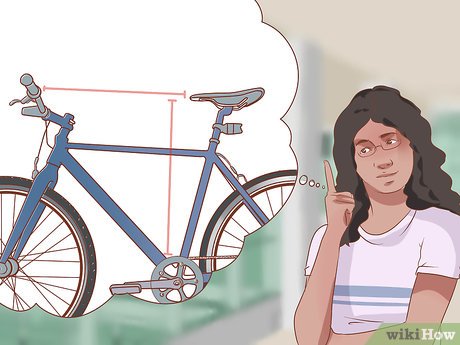
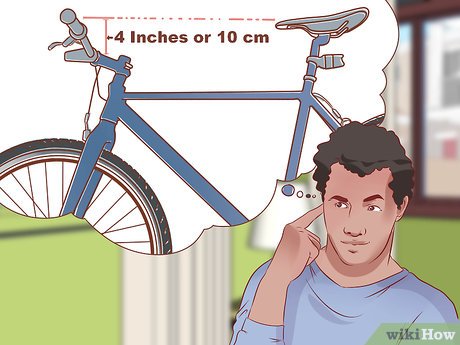
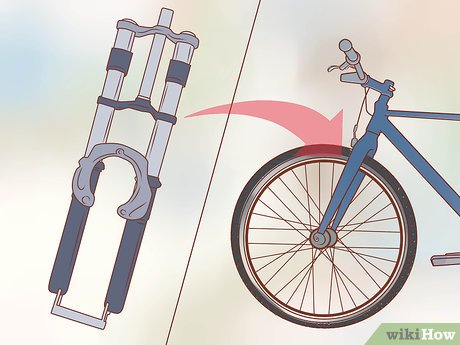
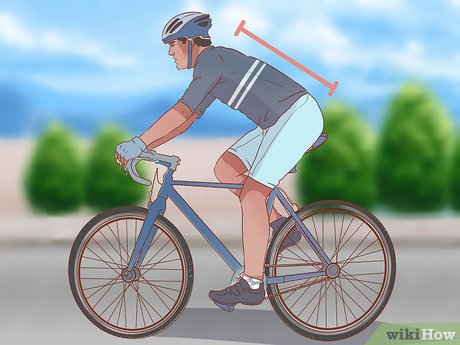
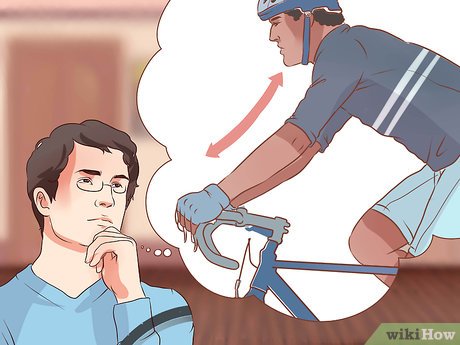
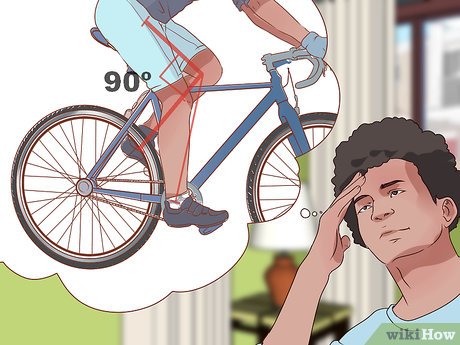
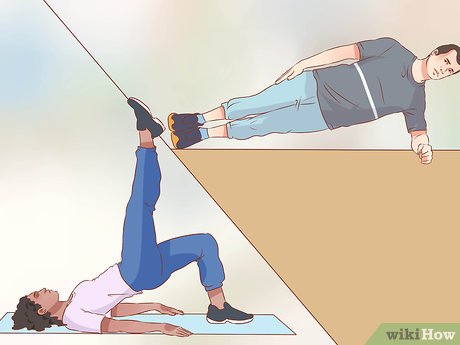
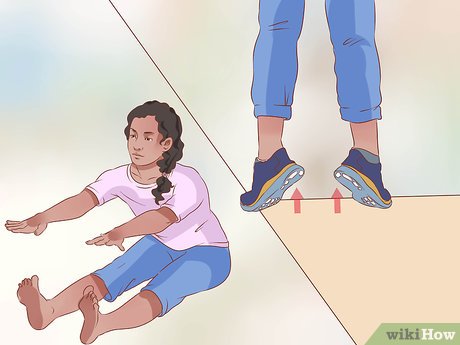
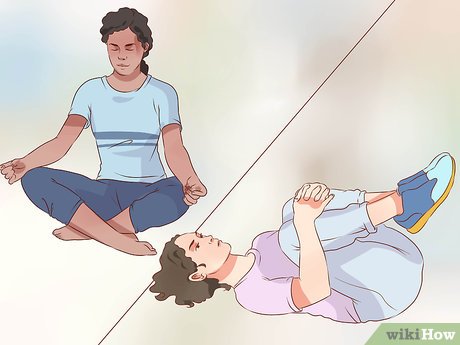






 8 back pain relief exercises you can do right at your desk
8 back pain relief exercises you can do right at your desk 4 back pain relief exercises that help you sleep well until morning
4 back pain relief exercises that help you sleep well until morning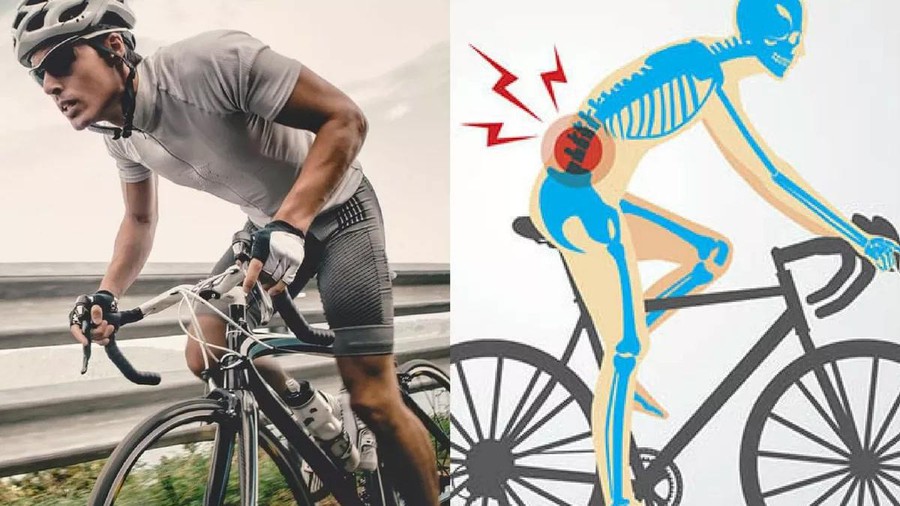 Roll 7 common cycling injuries
Roll 7 common cycling injuries If you have back pain, you should review your bra
If you have back pain, you should review your bra The scoliosis of the spine, the back always feels sore, turns out to be the cause
The scoliosis of the spine, the back always feels sore, turns out to be the cause 6 simple ways to minimize the harmful effects of sitting for a long time
6 simple ways to minimize the harmful effects of sitting for a long time